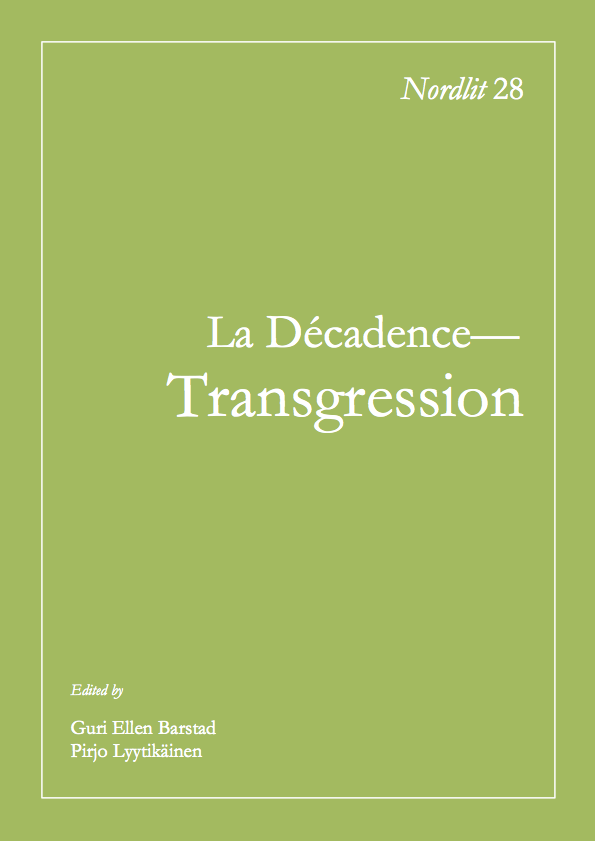No. 28 (2011): La Décadence ou une Esthétique de la Transgression

Edited by Guri Ellen Barstad and Pirjo Lyytikäinen (Helsinki).
Nordlit 28 consists of twenty-one articles on Decadence. They are based on papers that were presented at the conference ‘The Decadence or an Æsthetic of Transgression—La Décadence ou une Esthétique de la Transgression’, which took place June 9–12, 2010, at the Faculty of Humanities, University of Tromsø. Thirty scholars from eleven different countries participated in the conference. The aim of the conference was to examine and interpret the provocative aspects and the varieties of transgression in Decadent literature. This meant, at the same time, questioning the nature of these transgressions. It seemed legitimate to ask to what extent Decadent literature can be considered as captive of its age, in that it recycled and affirmed prevalent prejudices; for example in regard to women, homosexuality and race. […] Literary Decadence was one of the varied discourses of decay of the late 19th century, outlining in different ways the presumably inevitable decaying stage of Western civilization. These discourses addressed in like manner the threats of modern technology, theories on the spiritual and physical degeneration of the human race, and the metaphysical pessimism of fashionable philosophers. […] The discourse most characteristic of Decadence differs from naturalistic depictions of decay by its shift into fantasy and internalisation. Joris-Karl Huysmans’ novel A rebours (1884) demonstrated this transition and served as a compilation of the characteristics of Decadence. In Decadent prose, the protagonists (mainly civilized male intellectuals) reflect on their own state of decadence, choosing transgression, pleasure and decay, while in Naturalism environmental and genetic determination made tragic victims out of the principal characters (usually common people or women). There is a provocative aspect to æstheticising the evil and the ugly. ‘Épater le bourgeois’, the tendency to shake and overturn prevailing values, is an aspect of Decadence and a strategy which has remained important in modern art. On the other hand, the provocative nature of Decadence is often associated with resignation: It is resigned to inevitable decay rather than seeking to change the world. Weakness, fatigue and illness, of which the decadent era and its people suffer in the visions of Decadence, can only lead to destruction. Dreaming of transgressions sometimes is enough for the protagonists of Decadent narratives. But the authors managed, at least to some extent, to provoke audiences although many of them were marginal figures in the literary field of their time. Have a pleasant read.
Published:
2012-03-26




